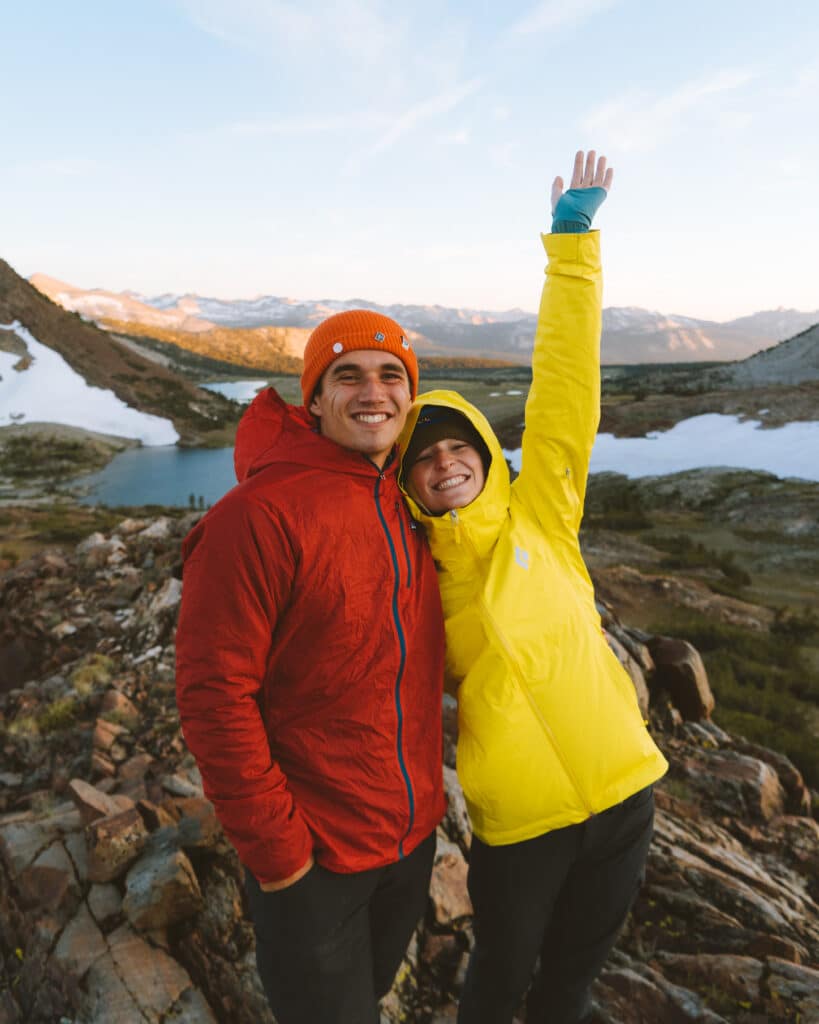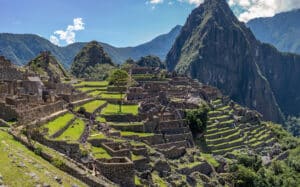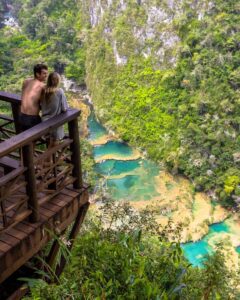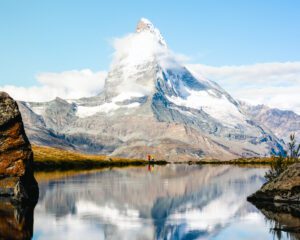The Best 4 Outdoorsy Things To Do Near Las Vegas
Disclaimer: This post may contain affiliate links. Please see our Disclosure Policy and Advertiser Disclosure for details.
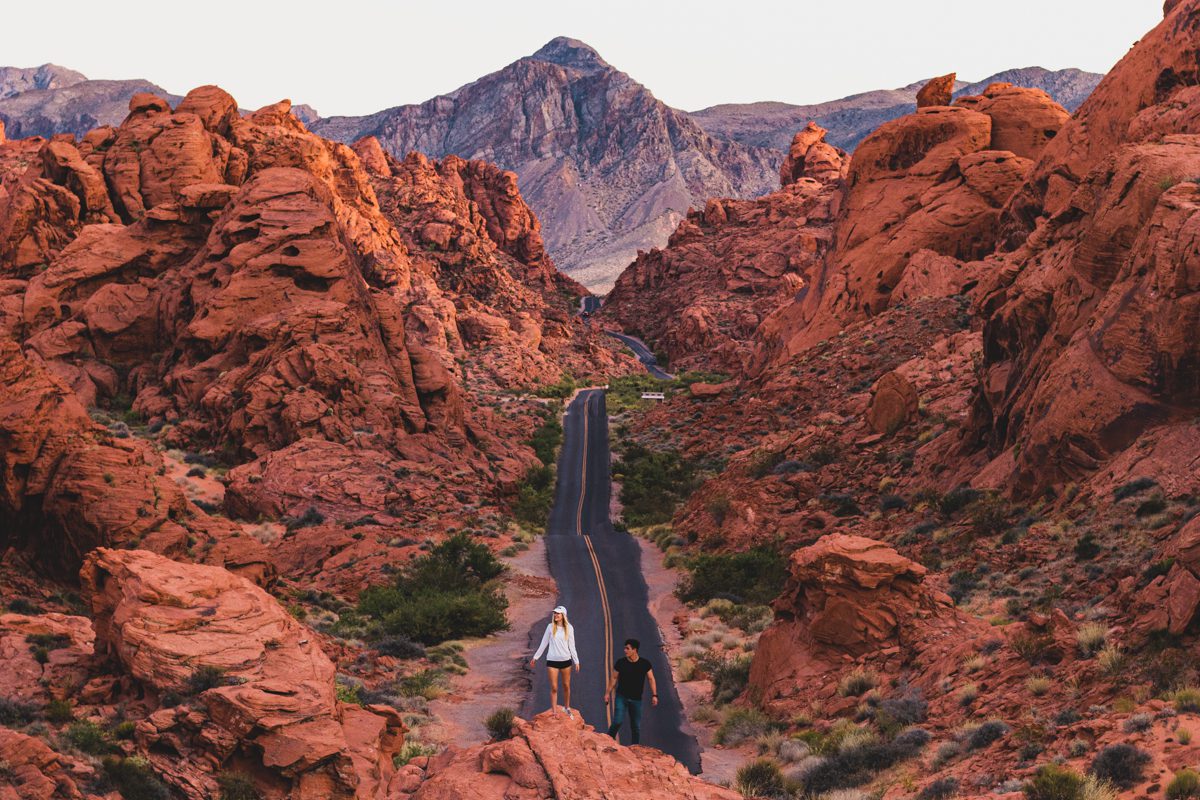
Las Vegas: the city of bright lights, never-ending entertainment, and of course, a few too many drinks. But what if we told you that there’s more to Sin City than just the glitz and glam of the strip? Beyond the casinos and bars, lies a world of adventure for those who seek it.
From hiking and rock climbing to kayaking and mountain biking, there are plenty of opportunities to get outside and explore the natural beauty of the surrounding desert landscape. This ultimate guide to the most adventurous things to do near Las Vegas, Nevada, will go over everything you need to know from the best time to visit, what to pack, best hikes to do, and more!
Las Vegas Travel Tips

Best Time to Visit Vegas for Exploring
Weather in Vegas
Las Vegas is located in the Mojave Desert, and temperatures can be extreme, especially during the summer months. If you plan to explore the surrounding area, consider visiting during the fall or spring when temperatures are mild and the scenery is beautiful. The winter months can also be a good time to visit, as temperatures are cool but not cold, and there is little chance of rain. Additionally, winter can also be a good time to visit if you’re interested in skiing or snowboarding at nearby resorts.
Crowds
Las Vegas is a popular tourist destination, and the city and it’s outdoor recreation areas can be crowded and expensive during peak travel times. If you want to avoid the crowds and high prices, consider visiting during the offseason, which is typically from November to January and from July to August.
What to Pack for Your Outdoor Adventures
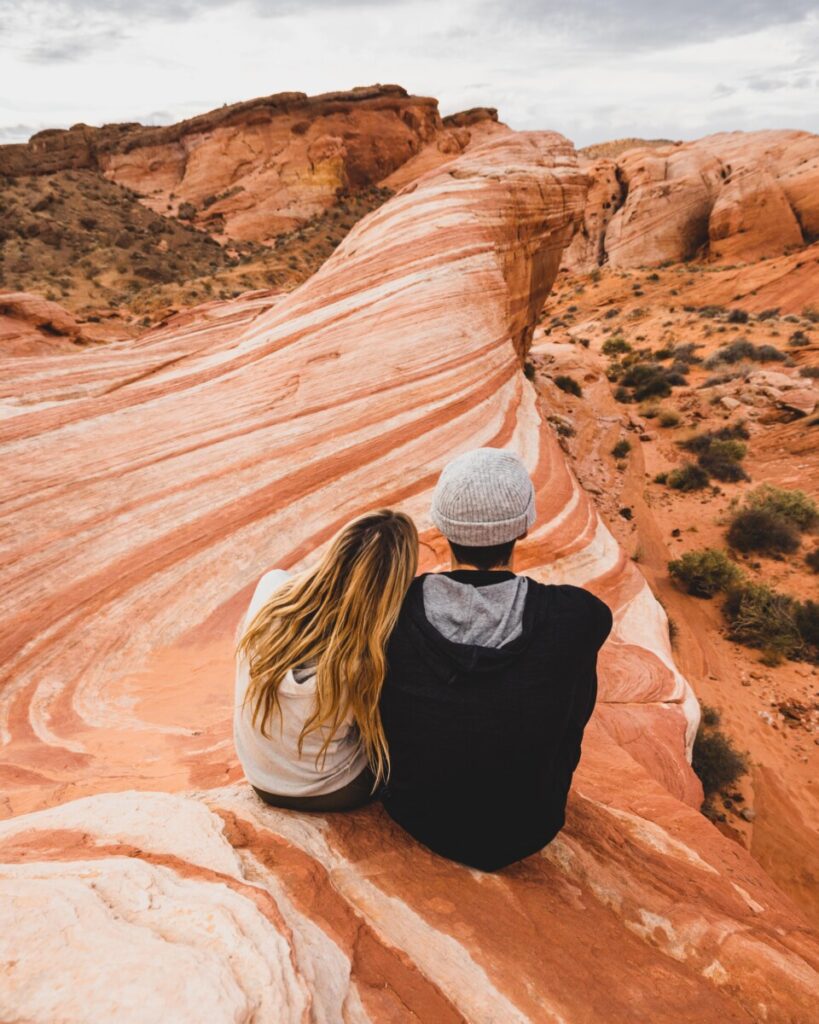
Packing the right gear for a day hike or any other adventure is essential for a safe and enjoyable experience. Here are some must have items that you should pack in your backpack for your upcoming outdoor adventures:
- Water: Staying hydrated is crucial when hiking, so make sure you pack enough water for your entire hike. A good rule of thumb is to bring at least two liters of water per person, and more if you are hiking in a hot and dry environment.
- Snacks: Pack some high-energy snacks to keep you fueled throughout your hike. Nuts, trail mix, energy bars, and fruits are all great options.
- Navigation tools: A map and compass are important for any hiking trip. Make sure you know how to read a map and use a compass before you head out. You can also bring a GPS device or a smartphone with a hiking app installed.
- First-aid kit: Accidents can happen on the trail, so it’s always a good idea to pack a basic first-aid kit. Make sure it includes bandages, gauze, adhesive tape, pain relievers, antiseptic wipes, and any personal medications.
- Sun protection: The sun can be intense when you’re hiking, so pack a hat, sunglasses, and sunscreen to protect your skin and eyes.
- Layers of clothing: The weather can change quickly on the trail, so it’s important to pack layers of clothing. Bring a waterproof and windproof jacket, a hat, gloves, and a warm layer, even if it’s warm when you start your hike. Make sure to check out our favorite hiking apparel pieces.
- Emergency whistle and flashlight: In case of an emergency, pack an emergency whistle and a flashlight with extra batteries.
- Multi-tool or knife: A multi-tool or a knife can be handy for cutting food, repairing gear, or emergency situations.
Optional items:
Depending on the length and difficulty of your hike, you may want to pack trekking poles, a camera, binoculars, insect repellent, or a book to read during breaks. There are restrooms at the trail heads in Red Rocks, but we’d also suggest packing some hand sanitizer, toilet paper, and wet wipes in case you need to use the restroom while hiking on the trail. We always like packing a pair of sandals in the car for after we complete our hikes too.
Packing Order
Remember to pack your day pack efficiently, with heavier items closer to your back, and lighter items towards the top. And most importantly, always let someone know where you’re hiking and when you plan to return. With the right gear and preparation, you’ll be ready to hit the trail and enjoy a safe and enjoyable day hike.
Top Places to Explore Near Las Vegas
Explore Valley of Fire State Park
Where is Valley of Fire State Park?
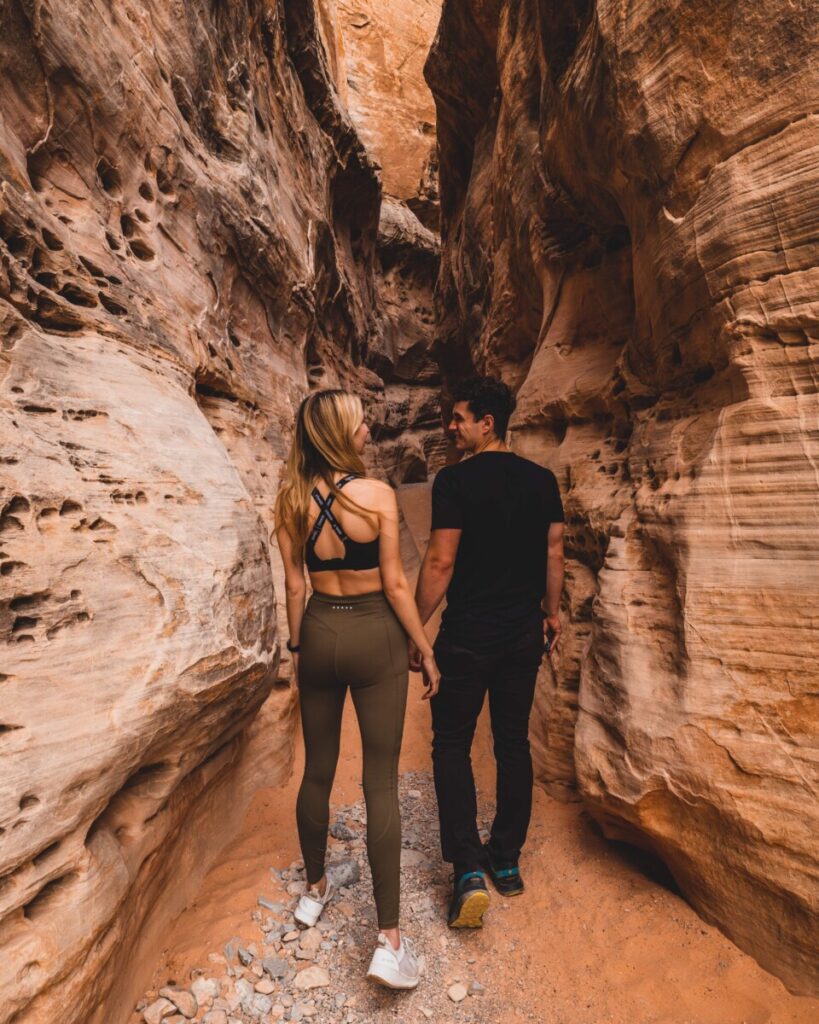
Located just 50 miles northeast of Las Vegas, Valley of Fire State Park is a stunning natural wonder that should not be missed. The park is known for its red sandstone formations, which glow in the sunlight and create a surreal and otherworldly landscape.
It’s important to note that the Valley of Fire is located in a remote area with limited services, so it’s a good idea to download Google Maps ahead of time and bring plenty of water and snacks.
How to Get to Valley of Fire
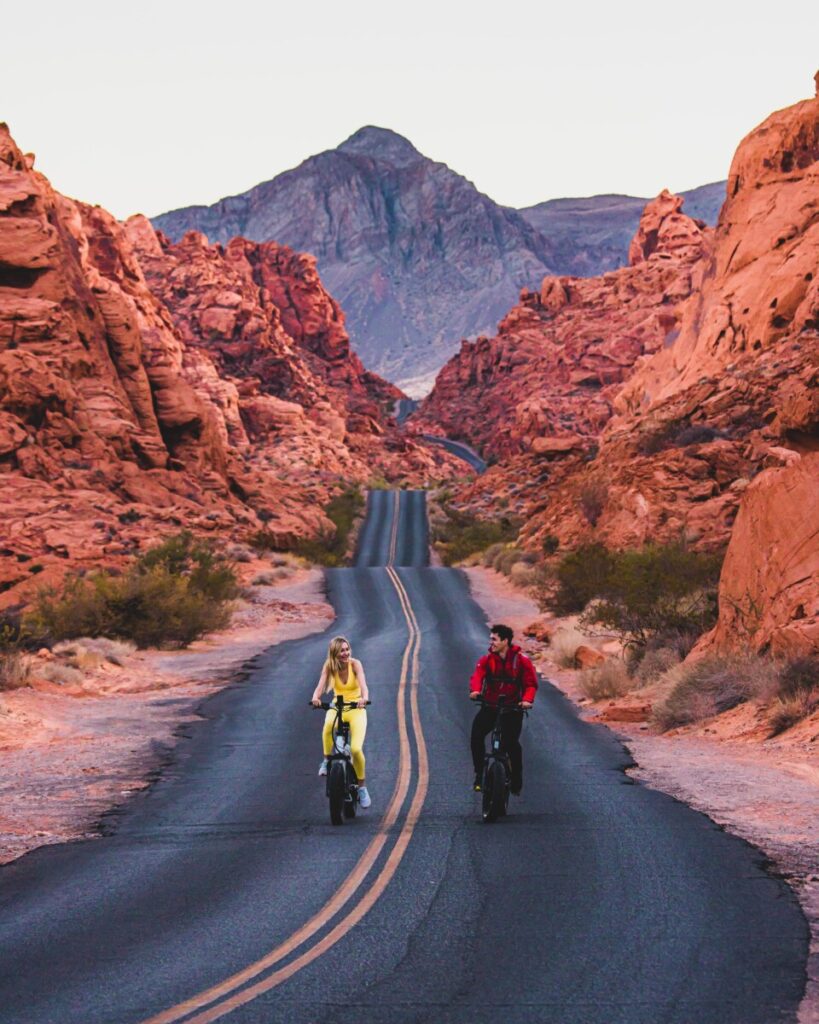
The most common way to get to the Valley of Fire is by car. From Las Vegas, take I-15 north for about 35 miles, then exit onto Valley of Fire Highway (NV-169) and continue east for about 15 miles until you reach the park entrance.
If you don’t want to drive yourself, there are several guided tours available that will take you from Las Vegas to the Valley of Fire. These tours typically include transportation, park admission, and a guide who will take you to some of the park’s most scenic spots.
Best Things to Do in Valley of Fire
After paying the $10 entrance fee, visitors can explore the park by hiking one of the many trails, including the famous Fire Wave Trail, which winds through a series of colorful sandstone formations, or by driving the scenic loop road, which offers stunning views of the surrounding landscape. Other popular things to do in Valley of Fire include visiting its ancient petroglyphs, keeping an eye out for some Big Horned Sheep, and hiking the slot canyons at the White Domes trail.
In addition to hiking and driving, the park is also a popular spot for camping, picnicking, and rock climbing. There are several campsites throughout the park, offering visitors the chance to spend the night under the stars and wake up to the stunning scenery of the Valley of Fire.
For more of our recommended hikes in Valley of Fire State Park, check out our done day itinerary here.
Hike Around Red Rock Canyon National Conservation Area
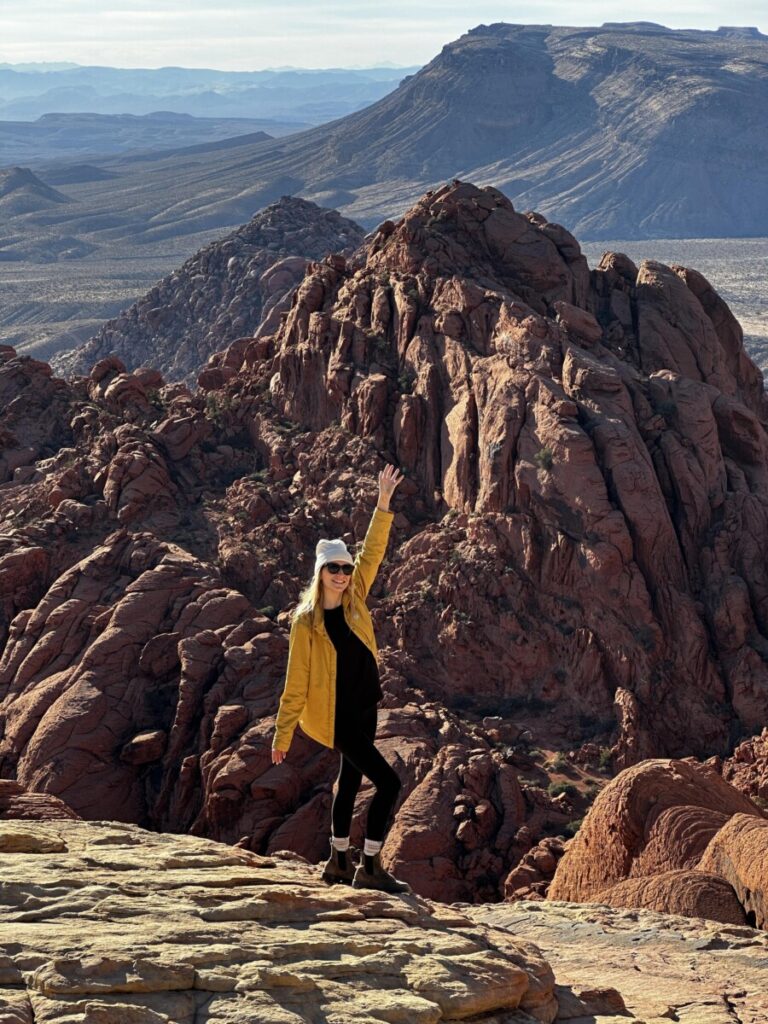
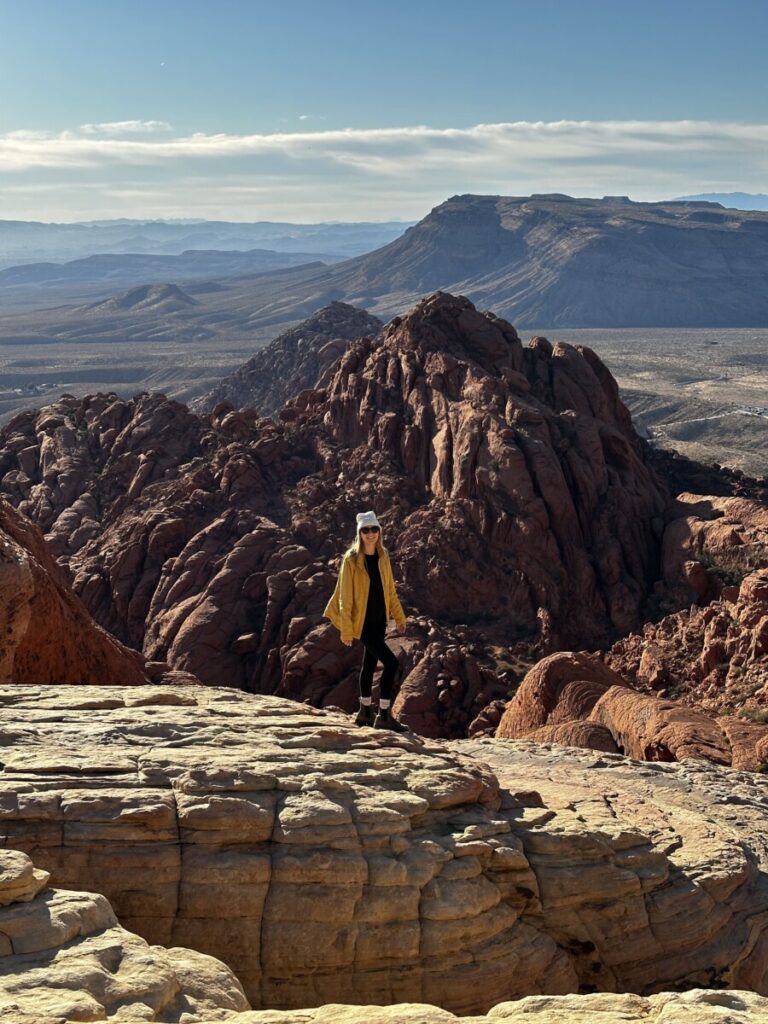
Located just 17 miles west of the Las Vegas Strip, Red Rock Canyon National Conservation Area is a breathtaking natural wonder that should not be missed. The park boasts numerous hiking trails, rock climbing routes, and scenic drives, making it the perfect place to spend a day exploring the great outdoors. Wildlife, such as desert tortoises, bighorn sheep, and coyotes, also call the area home.
How to Get to Red Rock Canyon National Conservation Area

From Las Vegas, take Charleston Boulevard (SR 159) west until you reach the park entrance. It’s a short 20-25 minute drive. If you aren’t driving your own car, you can also take the RTC bus service to Red Rock Canyon from Las Vegas. The route is called the Route 2 and leaves from the Bonneville Transit Center.
You can always hire a guide if you don’t want to drive yourself. There are several guided tours available that will take you from Las Vegas to Red Rock Canyon. These tours typically include transportation, park admission, and a guide who will take you to some of the park’s most scenic spots.
Hiking & Climbing in Red Rock Canyon
The park offers some of the most popular hikes, such as the Calico Tanks Trail that provides stunning views of the Las Vegas Valley. This trail is our top recommendation if you only have the chance to do one hike in the Conservation Area.
The trail is rated as moderate in difficulty, with some steep and rocky sections, so hikers should wear appropriate footwear and bring plenty of water. The trail is not very well-marked, so make sure to download your trail data ahead of time on All Trails or Gaia.
Along the trail, you will pass through a variety of desert landscapes, including red rock formations, Joshua trees, and wildflowers. The trail also offers stunning views of the surrounding mountains, including the Spring Mountains and La Madre Mountains.
One of the highlights of the trail is the Sandstone Quarry, a historic site where visitors can see the remnants of an old quarry operation that provided building materials for the Hoover Dam and other structures in the area. The site also offers stunning views of the surrounding canyons and rock formations.
Another amazing hiking option in Red Rocks is the Ice Box Canyon Trail, which passes by a seasonal waterfall and winds through a picturesque canyon. We’d recommend doing this hike in the spring to increase the likelihood of water flowing.
Additionally, Rock climbers can choose from over 2,500 established routes throughout the park, ranging from easy to extremely challenging.
If you’re not feeling a hike, make sure to do the full scenic drive! It’s a one way drive that is absolutely stunning and takes you all around the park.
Red Rock Canyon Entry Permits
Keep in mind that Red Rock Canyon does require a permit to enter from October 1st to May 31st. You can make a reservation up to 30 days in advance at 7 AM PT on a rolling daily window. If you miss early reservation opportunities, there’s also an additional chance to make one two days in advance at 7 AM PT. To make a reservation, check out their booking platform here.
Enjoy the Water at the Lake Mead National Recreation Area
Located just 30 minutes east of Las Vegas, Lake Mead National Recreation Area is a water lover’s paradise. The area boasts 1.5 million acres of land and water, making it the perfect place for boating, fishing, kayaking, and swimming. The lake itself is the largest reservoir in the United States, with over 500 miles of shoreline to explore.
How to Get to Lake Mead from Las Vegas
To get to Lake Mead from Las Vegas, take I-515/US 93/US 95 south until you reach Boulder City. From there, follow signs to Lake Mead.
There is no public transportation that goes directly to Lake Mead, but you can take a bus to Boulder City and then arrange for a taxi or ride-sharing service to take you to the park.
Black Canyon Water Trail
One of the most popular areas for kayaking at Lake Mead is the Black Canyon Water Trail. This 30-mile stretch of the Colorado River offers stunning views of the surrounding canyons and rock formations, as well as opportunities for wildlife spotting and hiking.
Kayakers can launch from either the Hoover Dam or the Willow Beach Marina and paddle downriver, taking in the beautiful scenery along the way. The Black Canyon Water Trail offers a variety of campsites for overnight trips, as well as picnic areas and hiking trails for day use.
If you don’t own your own kayak and still want to do this beautiful kayaking trail on your day trip from Vegas, you can also go with a tour! There are a ton available via Get Your Guide and Viator.
Lake Mead Regulations
Visitors to Lake Mead should be aware of the park’s rules and regulations for boating and kayaking, including requirements for life jackets, permits, and safety equipment.
- Life Jackets: All kayakers must have a Coast Guard-approved life jacket on board and readily accessible. Children under 13 must wear a life jacket at all times while on the water.
- Permits: All motorized and non-motorized watercraft must have a valid Lake Mead National Recreation Area annual or day-use permit. Permits may be purchased online or at various locations throughout the park. It costs $25 per vehicle to enter the Lake Mead Recreation Area.
- Safety Equipment: Kayakers must have a whistle or other sound-producing device, a throwable flotation device, and a paddle or oars.
- Speed Limits: All motorized boats must follow posted speed limits and wake restrictions. Kayakers should stay as far to the right of the channel as possible and avoid areas where motorized boats are present.
- Environmental Protection: Kayakers should be mindful of the impact of their activities on the environment, including avoiding disturbing wildlife, avoiding littering or dumping waste in the water, and minimizing erosion or damage to shorelines.
It’s important for kayakers to familiarize themselves with all park regulations and safety guidelines before setting out on the water. Park rangers are available to answer any questions and provide additional information on regulations and safety practices.
Hiking Around Lake Mead
In addition to water activities, the area also has several hiking trails and scenic drives, offering visitors the chance to explore the surrounding desert landscape. Popular hikes include the Historic Railroad Trail that follows an old railroad bed and the Goldstrike Hot Springs Trail that leads hikers through a scenic canyon and past several hot springs.
Furthermore, the lake’s hiking trails can be crowded during peak season, so plan to arrive early and be prepared for limited parking.
Hike Around Mt. Charleston & The Spring Mountains
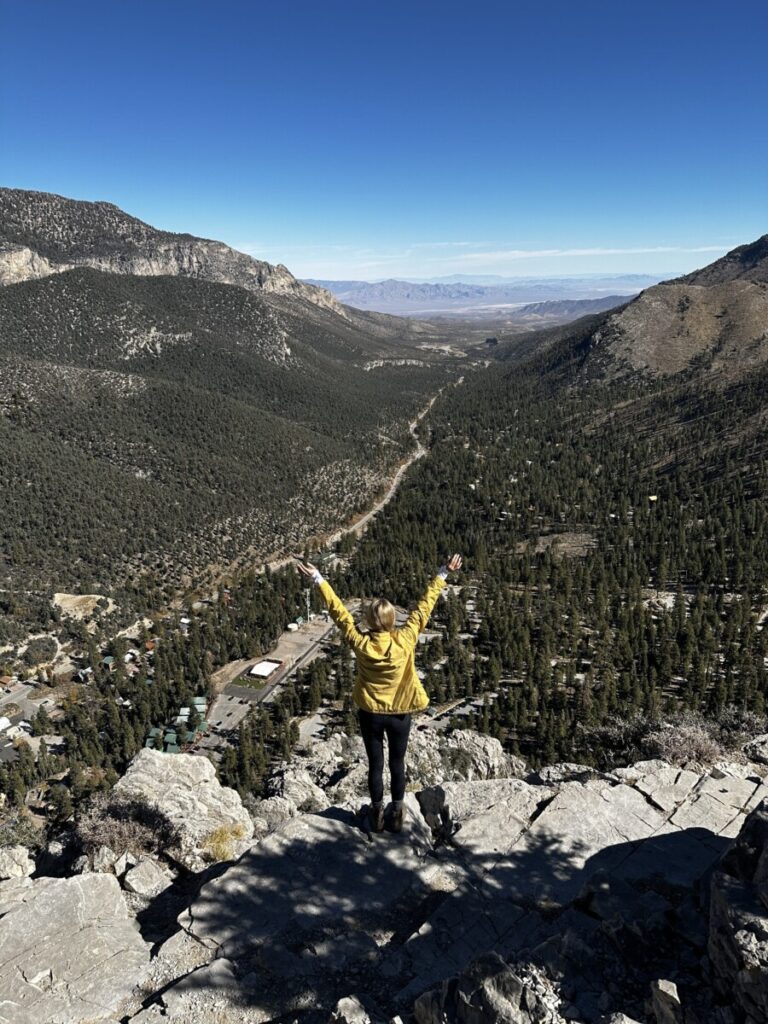
How to Get to Mt. Charleston
From Las Vegas, take US-95 north until you reach NV-157 (Kyle Canyon Road). Turn left onto NV-157 and follow the road up to the mountain.
Hiking in the Spring Mountains National Recreation Area
Mt. Charleston has over 50 miles of hiking trails that range from easy nature walks to strenuous summit hikes. The last time we visited Mt. Charleston, we opted to do its most popular hike – the Cathedral Rock Trail. If you only have time for one hike in this area, let it be this one!
Cathedral Rock Trail
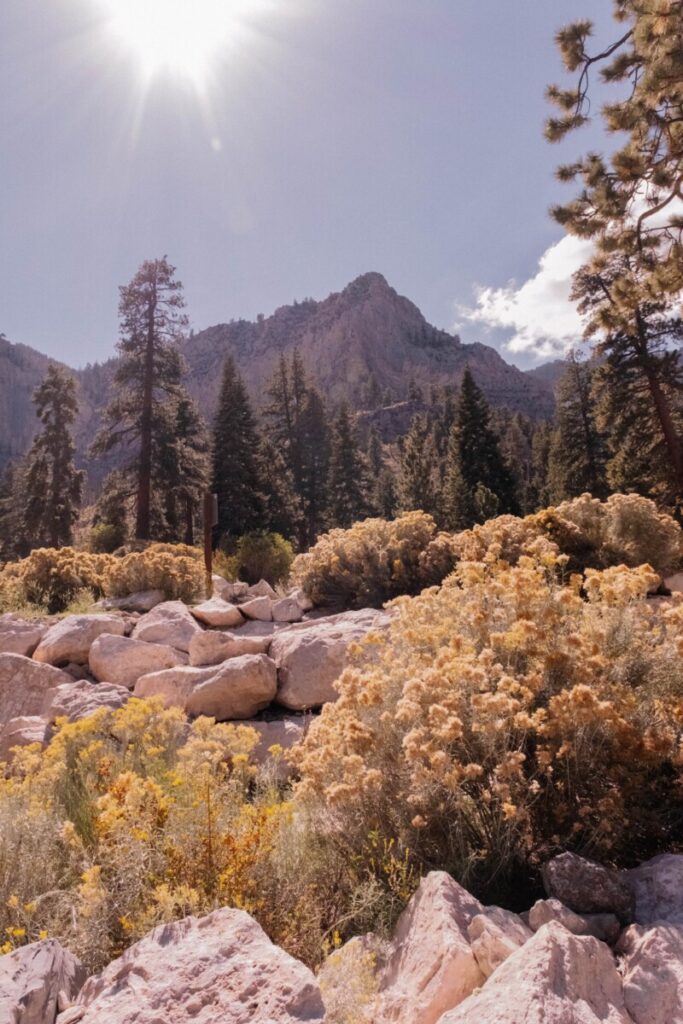
The hike covers approximately 2.7 miles round trip and rates as moderately difficult, with an elevation gain of about 700 feet. Although the trail is well-maintained, we recommend wearing appropriate hiking shoes and bringing plenty of water, especially during the summer months.
The trail begins with a steady uphill climb through a forested area, with views of the surrounding mountains and canyons. As hikers near the top of the trail, the vegetation becomes sparser, and the trail becomes steeper and rockier.
Hikers who reach the top of the trail are rewarded with stunning views of the surrounding area, including the peaks of Mummy Mountain and Charleston Peak. The highlight of the trail is the Cathedral Rock formation, a towering rock formation that provides a dramatic backdrop for photos.
Weekends and holidays can see crowded trails, so plan to arrive early to avoid crowds and secure a parking spot at the trailhead. Visitors can bring their dogs on the trail, but they must keep them on a leash.
Overall, the Cathedral Rock Trail is a great option for hikers looking to escape the hustle and bustle of Las Vegas and explore the natural beauty of the surrounding area.
Ready to Explore Outdoors near Las Vegas?
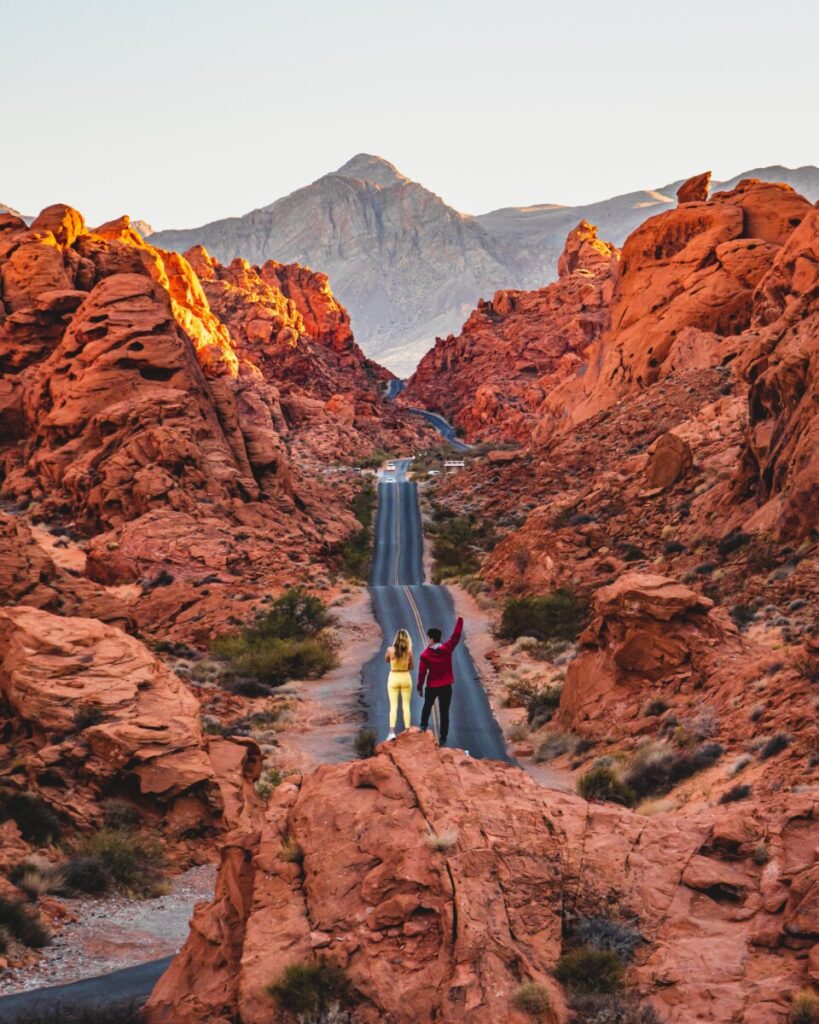
In conclusion, Las Vegas may be known for its bright lights and bustling casinos, but the surrounding area offers a wealth of outdoor activities for visitors to enjoy. From hiking and rock climbing to kayaking and swimming, there is something for everyone to enjoy in the natural beauty of the desert landscape.
So if you’re looking to get away from the crowds and explore the great outdoors, be sure to check out Red Rock Canyon National Conservation Area, Lake Mead National Recreation Area, and Valley of Fire State Park on your next trip to Las Vegas.
You may also enjoy:
